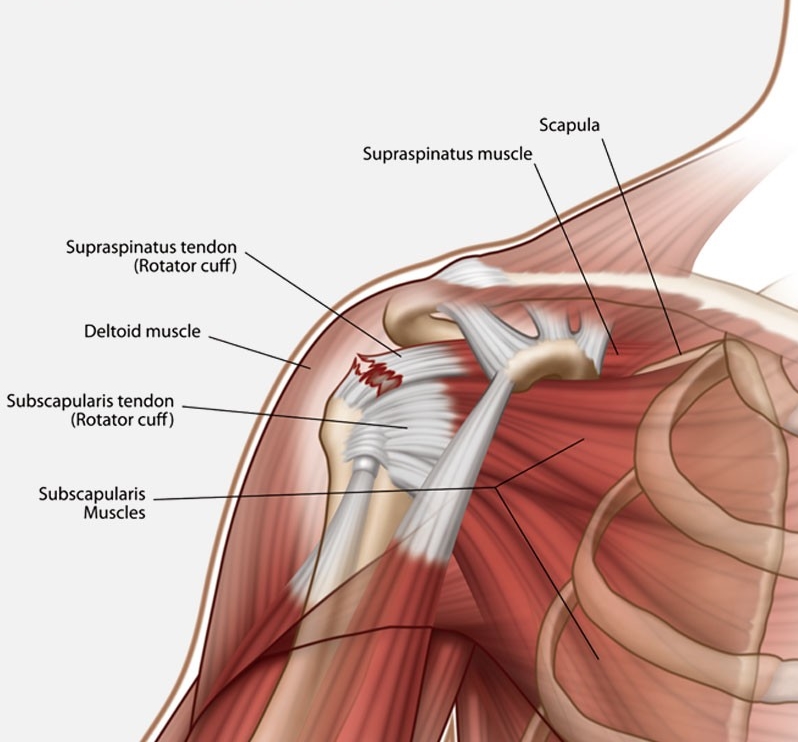Commonly Used In...
Total Joint Replacement
Most of the patients that undergo a total joint replacement surgery are previously diagnosed with severe arthritis and seek pain relief and increased range of motion.
Mutliple joints can be candidates for joint replacement (ankle, knee, hip, shoulder, elbow, finger). During the procedure, surgeons assess damaged parts of the joint, and replace it with metal and plastic surfaces that are naturally shaped to restore knee movement and normal function.
Click to View Study: Amniotic Membrane Tissue During Repair of Posterior Tibial & Achilles Tendons
Click to View Study: Effect Of Human Amniotic Fluid On Bone Healing
Spine Surgery
There are a variety of problems that can lead to spine surgery. The primary reason why patients seek professional help is because of the increasing back pain that impairs their day-to-day life.
The most common type of back surgery is Spinal Fusion. During this procedure the surgeon joins together spinal bones, called vertebrae. This eventually restricts motion between the bones of the spine and limits the stretching of the nerves.
Post operatively, patients that have undergo spine surgery should eventually experience less pain, and with less pain comes additional benefits like increased activity. Regenerative treatments have been shown to substantially shorten the time it takes for patients to make a healthy recovery, returning them to normal activities quicker.
Click to View Study: The Use of a Dehydrated Amnion/Chorion Membrane Allograft in Patients Who Subsequently Undergo Reexploration after Posterior Lumbar Instrumentation
Click to View NIH Study: Third Trimester NG2-Positive Amniotic Fluid Cells are Effective In Improving Repair In Spinal Cord Injury
Click to View NIH Study: Role of Human Amniotic Epithelial Cell Transplantation in Spinal Cord Injury Repair Research
Joint Reconstruction
Joint injuries are common among both athletes and general public alike, caused by high stress loads and abnormal forced movement.
The Anterior Cruciate Ligamnet (ACL) is a major stabilizing ligament of the knee often requiring surgery when torn or ruptured.
During this procedure, the surgeon will remove the torn ligament, using your own tissue or the tissue of an organ donor to make a new ACL. Surgeons attach the new ligament to the bone with screws or other devices to hold it in place. As your knee heals, the bone tunnels created by the surgeon to bring new tissue through will start filling in, securing the new ligament.
Click to View Article: Amniotic Membrane Used To Repair Human Articular Cartilage
Rotator Cuff Injury
Rotator cuff (muscles and tendons of the shoulder) are vulnerable to tears, impingement and related injuries. Rotator cuff injuries vary from mild tendon inflammation ( rotator cuff tendonitis), shoulder bursitis (inflamed bursa), calcific tendonitis (bone forming within the rotator cuff tendon) to partial and full thickness rotator cuff tears, which may require rotator cuff surgery.
Tendons, ligaments, and cartilage of the shoulder are virtually avascular meaning they have no blood supply and/or vessels to transport new nutrients and 'building blocks' like protein to rebuild and repair damage, making full recovery a generally lengthy process.
Through the use of amnion-derived regenerative treatments, physicians can introduce a high concentration of Growth Factors, proteins, cytokines, and essential nutrients that help speed healing by providing your body a direct, potent source of these essential 'building blocks' for tissue regeneration.
Improving Outcomes with Amnio Technology
Amnio therapy has been effective in healing ligament, tendon, cartilage, and soft tissue injury. Amnion-derived therapies work by releasing essential Growth Factors as well as recruiting stem cells to the site of damage to promote tissue regeneration. Stem cells are primitive cells that can undergo differentiation to form different types of cells in the body, such as bone, blood, cartilage, tendon, ligaments, etc. These cells are responsible for healing damaged tissue by generating new healthy cells. However, with age, the body loses its ability to attract enough stem cells to the site of injury. In this regard, amnio therapy therapy delivers a high concentration of proteins, carboyhdrates, cytokines, keratinocytes and growth factors to feed stem cells at the affected area to promote rapid, natural healing.
Noted In Published Medical Literature
Tendinosis
Rotator cuff tears
Muscle tears
Tennis elbow
Carpal Tunnel Syndrome
Joint and Disc injuries
Arthritis
Tendon & ligament tears
Nerve injury
Spinal arthritis (Facet Syndrome)
In The News
BIOLOGICS FEATURE: Using Birth Tisses In Spine Surgery
BIOLOGICS FEATURE: Orthopedic Stem Cell Soared In 2012
BIOLOGICS FEATURE: Amniotic Tissue: Making Waves, Fixing Smiles
BIOLOGICS FEATURE: UCLA Breakthrough Announced For Stem-Cell Cartilage
SPINE FEATURE: The Best Spine Technologies of 2010
SPINE FEATURE: The Ten Best New Spine Technologies For 2013
LARGE JOINTS FEATURE: Stem Cell Cartilage Rejuvenation Inches Closer
EXTREMITIES FEATURE: Birth Tissue/Ankle Tendon Repair Study Released





